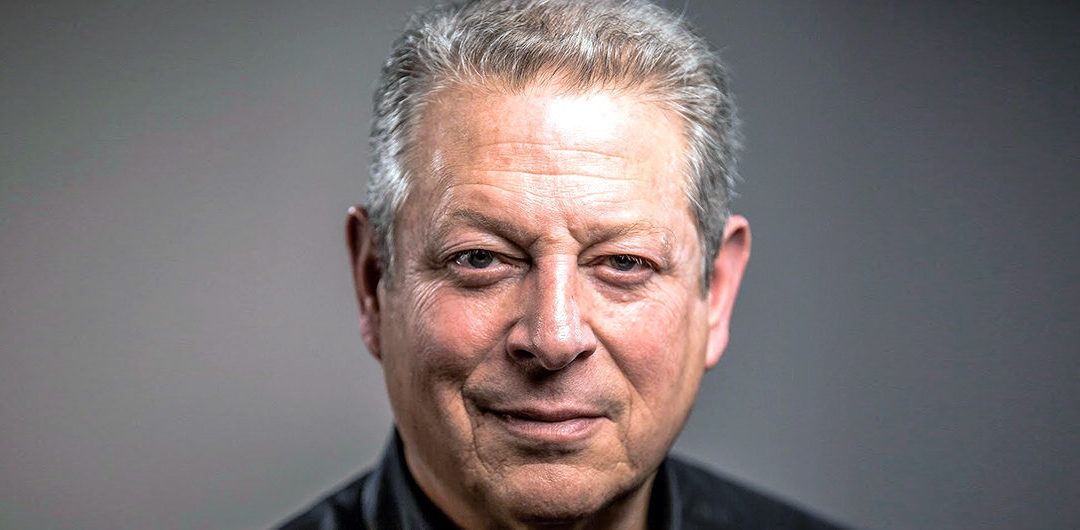PARK CITY — I thought I knew exactly what I was getting into when I sat down for “An Inconvenient Sequel: Truth to Power” at this year’s Sundance Film Festival.
I’ve seen the 2006 original, “An Inconvenient Truth” and since that time watched more than my fair share of similarly themed documentaries. But as the lights dimmed and the movie began, I noticed a distinct shift in the narrative I’d become familiar with. “An Inconvenient Sequel” stands as a call to action for anyone taking ownership in our planet’s health, but the movie does so while changing a familiar element to the environmental-documentary formula. This time around, Earth isn’t the movie’s protagonist.
In fact, in some kind of weird Marvel’s-changed-everything sort of way, Earth plays more like a sympathetic hostage in “An Inconvenient Sequel,” and our hero Al Gore is the man who can do something about it. As they say, with great power comes great responsibility, and that theme is on full display in “An Inconvenient Sequel.”
Does it work? Does the man verses global warming approach make for more compelling storytelling? In some ways, definitely. In other ways, filmmakers Bonni Cohen and Jon Shenk get lost trying to keep up with their main character, and as a result, simply end up with a mediocre documentary.
Like always, let’s chat about the highlights:
For the faithful
When it comes to preaching to the choir, it’s kind of hard to miss, isn’t it?
If you’ve already pitched a tent at Camp “Clean Air For Me,” then this is the kind of movie that makes you wonder why people don’t get it. When 10 of the last 16 years have been the hottest on record, with 2016 being crowned the new king, that deserves some attention, doesn’t it? But the faithful have heard all this before, and there are better projects out there covering the same material.
What might be new to receptive audiences however, is the idea that this movement has already won. “An Inconvenient Sequel” is a surprisingly optimistic look at a movement that has passed a tipping point, and now stares at inevitable success. Strangely, that might be a difficult message to sell to a choir with rolled up sleeves and the proverbial eye of the tiger.
For the cynics
One of the biggest criticisms of “An Inconvenient Truth,” even for those concerned about the cause, was that the 2006 film made more than a few hyperbolic predictions. To be honest, I don’t remember the original movie that well, and in full disclosure, I didn’t take time to research its accuracy. But if you were hoping the sequel said, “Here is what we claimed in 2006, here’s what we got right and here’s where we admit we made some mistakes,” this is not that movie.
Instead, “An Inconvenient Sequel” addresses the skeptics with other skeptics who now see the issue as a matter of progress. It drives this point home by visiting the mayor of Georgetown, Texas, Dale Ross, who is proud of his city running on 100 percent renewable power. A self-proclaimed conservative Republican, Ross doesn’t hesitate to let Gore know where he stands on politics or how little he cares about climate science, but he does believe if you want clean air, you don’t put anything in it.
Deciding not to make the film argumentative, and instead simply documenting how people are responding to Gore’s message makes the film less provocative, but it might go a long way in finding common ground on an often-divisive topic.
For the documentary lover
Filmmakers Bonni Cohen and Jon Shenk follow three different aspects of Gore’s life in “An Inconvenient Sequel.” The first, of course, being the now famous slideshow, which luckily ends up being little more than a footnote by the end of the film. The second, and most scenic, is Gore’s visit to the many areas of the globe that have been affected by rapid climate change, and the third, Gore’s place in the politics behind saving the planet.
Unfortunately for Cohen and Shenk, the slideshow has already been covered and the scenic, nature-doc approach to climate change has been done better elsewhere. Where the movie shines, however, is when it follows Gore into the many closed-door meetings and negotiations he’s actively involved in. This is not only fascinating to watch, but finds compelling conflict that ultimately saves the documentary from just becoming white noise in a video library of better movies.
Conclusion
To its credit, “An Inconvenient Sequel” sticks to its optimistic vision of the future and doesn’t spend a lot of time belittling the other side. It does suffer from some slow pacing and paint-by-numbers documentary filmmaking, but when Cohen and Shenk follow Gore behind closed doors, it proves it has a reason for existing.
I doubt even those closest to the cause would call this movie a must-see, but there will be a night soon enough where you’re not sure what to watch and “An Inconvenient Sequel” will show up on your favorite streaming service. That could be the night to give this one a chance.

